(The full, nine-inning Playbook was originally published during the spring of 2020. The following 2024 analysis is new.)
We've gone through the basics of fantasy baseball, discussed salary cap strategy and how to build a cheat sheet. We've also provided in-season trade and free agency tips, dug deep into the advanced stats (including those provided by Statcast) and examined the latest trends around the league.
Still, even with all those tools at your disposal, there's no greater truth to fantasy baseball success than this: The key ingredient to winning a championship is an extensive knowledge of the player pool itself.
This final edition of the Playbook takes you through my own playbook -- a file I compile and maintain annually containing notes on hundreds of players, where I'll jot down any sort of news byte, injury report, statistical nugget or neat fact that might help in the decision-making process. It's from this file that I craft my player rankings and ultimately create my own cheat sheets.
They're things you might consider when drafting any of the listed names, though my rankings ultimately provide you my best estimate of each player's current-season worth.
With that in mind, here are a few of those players who have sprung to the front of my mind as we get ready for the spring action to come:
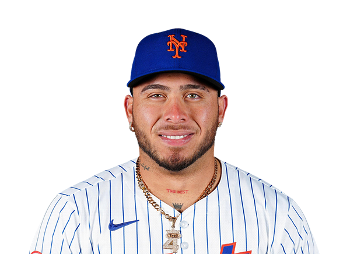 Francisco Alvarez, in 2023, became only the sixth rookie catcher in history -- counting only rookie-eligible players who appeared in at least 50% of their games at the position -- to hit at least 25 homers. He hit exactly 25 and, in the process, joined Sean Murphy as the only catchers with at least 12% Statcast Barrel and 45% hard-hit rates, backing up his reputation as an elite power hitter. Most importantly, however, Alvarez earned good grades for both his framing and pop time, alleviating questions about his defensive capabilities as he adapts to big league play. He's an "outside the top 10" positional option who presents some of the greatest upside among catchers.
Francisco Alvarez, in 2023, became only the sixth rookie catcher in history -- counting only rookie-eligible players who appeared in at least 50% of their games at the position -- to hit at least 25 homers. He hit exactly 25 and, in the process, joined Sean Murphy as the only catchers with at least 12% Statcast Barrel and 45% hard-hit rates, backing up his reputation as an elite power hitter. Most importantly, however, Alvarez earned good grades for both his framing and pop time, alleviating questions about his defensive capabilities as he adapts to big league play. He's an "outside the top 10" positional option who presents some of the greatest upside among catchers.
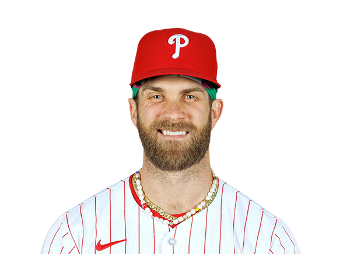 Bryce Harper's 2022-23 statistical downturn had much less to do with the passing of his 30th birthday (Oct. 16, 2022) than it did with the elbow injury he suffered during an April 16, 2022, game in Miami, forcing him into the DH role for the remainder of that season and ultimately resulting in Nov. 23, 2022, Tommy John surgery. Here's a comparison of his performance from July 1 of last season, 220 days removed from the operation, to his 2021 that earned him NL MVP honors:
Bryce Harper's 2022-23 statistical downturn had much less to do with the passing of his 30th birthday (Oct. 16, 2022) than it did with the elbow injury he suffered during an April 16, 2022, game in Miami, forcing him into the DH role for the remainder of that season and ultimately resulting in Nov. 23, 2022, Tommy John surgery. Here's a comparison of his performance from July 1 of last season, 220 days removed from the operation, to his 2021 that earned him NL MVP honors:
2021 season: .309/.429/.615, 16.7% walks, 91.1 mph average exit velocity, 49.7% Statcast hard-hit rate
7/1/23-10/24/23: .298/.419/.584, 16.1% walks, 92.0 mph average exit velocity, 51.9% Statcast hard-hit rate
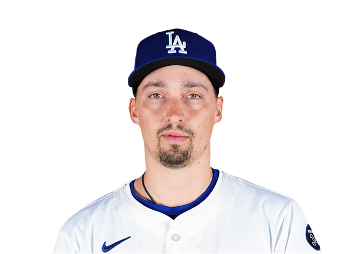 I've written quite a bit about Blake Snell throughout the Playbook, with most notes saying to approach him with skepticism. But, to offer up a positive about his magical 2023, consider that of his 32 starts, 11 were against the top six offenses in baseball, representing the six that averaged more than 5.0 runs per game for the season. Snell scored an MLB-leading 151 fantasy points, or 31% of his seasonal total, against those six opponents, thanks to his 2.56 ERA and 30.0% strikeout rate in those starts.
I've written quite a bit about Blake Snell throughout the Playbook, with most notes saying to approach him with skepticism. But, to offer up a positive about his magical 2023, consider that of his 32 starts, 11 were against the top six offenses in baseball, representing the six that averaged more than 5.0 runs per game for the season. Snell scored an MLB-leading 151 fantasy points, or 31% of his seasonal total, against those six opponents, thanks to his 2.56 ERA and 30.0% strikeout rate in those starts.
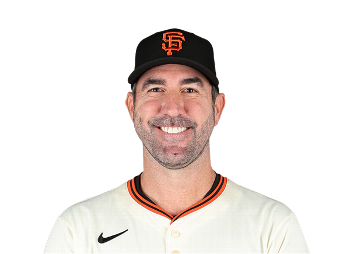 Justin Verlander's career is unquestionably "Hall of Fame caliber" and he has been plenty productive in his two seasons since recovering from Tommy John surgery. Still, he's now 41 and, beneath the surface of his 2023 numbers, he was much more of a matchups-based pitcher than you might have realized. Against the league's bottom-eight offenses, each of which averaged fewer than 4.25 runs, Verlander scored 159 fantasy points, or 47% of his seasonal total (341), over 11 starts. Against the top-six offenses, meanwhile, he scored only 22 fantasy points in five starts, behind a 6.00 ERA and 1.56 WHIP.
Justin Verlander's career is unquestionably "Hall of Fame caliber" and he has been plenty productive in his two seasons since recovering from Tommy John surgery. Still, he's now 41 and, beneath the surface of his 2023 numbers, he was much more of a matchups-based pitcher than you might have realized. Against the league's bottom-eight offenses, each of which averaged fewer than 4.25 runs, Verlander scored 159 fantasy points, or 47% of his seasonal total (341), over 11 starts. Against the top-six offenses, meanwhile, he scored only 22 fantasy points in five starts, behind a 6.00 ERA and 1.56 WHIP.
Considering his average fastball velocity dipped to its lowest number in seven years (94.3 mph), his walk rate (6.7%) was his highest since 2017 and he surrendered his highest hard-hit rate (41.3%) in any of Statcast's nine seasons of tracking it, it's fair to wonder whether Verlander no longer belongs ranked among the game's elite fantasy starters.
 Jazz Chisholm Jr. has been excellent for rotisserie play when healthy, batting .245/.304/.452 while averaging 25 HR, 75 RBIs, 28 SB and 80 runs per 162 games for the time he has been on the active roster over parts of four big league seasons. To put that into perspective, only seven players reached all four of those counting-number thresholds with better hitting ratios in all three categories last season -- one in which stolen bases were markedly up.
Jazz Chisholm Jr. has been excellent for rotisserie play when healthy, batting .245/.304/.452 while averaging 25 HR, 75 RBIs, 28 SB and 80 runs per 162 games for the time he has been on the active roster over parts of four big league seasons. To put that into perspective, only seven players reached all four of those counting-number thresholds with better hitting ratios in all three categories last season -- one in which stolen bases were markedly up.
However "healthy" has been a problem for Chisholm, as he has missed 174 team games across five different IL stints during his career (excluding his additional two stints on the COVID-19 list). That's more than one-third of the Miami Marlins' schedule during that time -- a track record that shouldn't be ignored.
 Tyler Glasnow's arrival in Los Angeles has generated plenty of excitement in fantasy leagues, and with good reason. Over the past five seasons combined (and among pitchers who have made as many starts as he did), Glasnow ranks second in FIP (2.89) and strikeout rate (35.0%) behind only Jacob deGrom, and third in batting average allowed (.194), behind just deGrom and Verlander. That makes Glasnow, on a per-start basis, among the most productive pitchers in fantasy terms, and the Dodgers' supporting cast should support him as well as any team could.
Tyler Glasnow's arrival in Los Angeles has generated plenty of excitement in fantasy leagues, and with good reason. Over the past five seasons combined (and among pitchers who have made as many starts as he did), Glasnow ranks second in FIP (2.89) and strikeout rate (35.0%) behind only Jacob deGrom, and third in batting average allowed (.194), behind just deGrom and Verlander. That makes Glasnow, on a per-start basis, among the most productive pitchers in fantasy terms, and the Dodgers' supporting cast should support him as well as any team could.
Conversely, Glasnow made only 60 starts during that same five-year time span, a total exceeded by 135 other pitchers. Yes, a significant amount of that missed time was a direct result of the torn UCL in his elbow that he suffered in June 2021, ultimately requiring Tommy John surgery two months later and costing him 15 months of action, but Glasnow did also miss the first two months of 2023 due to an oblique issue. Tuck that away if you lean toward the optimistic side of his 2024 outlook.
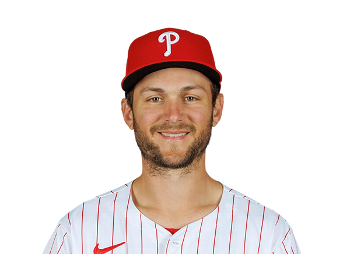 Trea Turner's first year with the Philadelphia Phillies followed a common trend of big-name free agents struggling to adapt to new circumstances, as he carried .236/.280/.371 hitting rates into June, with 24.3% strikeout and 53.5% swing rates that were significantly higher than the 18.0% and 47.1% numbers he had in his career entering 2023. After making an adjustment to his swing while working with hitting coach Kevin Long, however, Turner broke through with a 4-hit, 2-HR, 3-RBIs, 3-run performance on June 5, and ultimately hit .283/.342/.507 with 21 HR and 23 SB in 101 games over the season's final four months.
Trea Turner's first year with the Philadelphia Phillies followed a common trend of big-name free agents struggling to adapt to new circumstances, as he carried .236/.280/.371 hitting rates into June, with 24.3% strikeout and 53.5% swing rates that were significantly higher than the 18.0% and 47.1% numbers he had in his career entering 2023. After making an adjustment to his swing while working with hitting coach Kevin Long, however, Turner broke through with a 4-hit, 2-HR, 3-RBIs, 3-run performance on June 5, and ultimately hit .283/.342/.507 with 21 HR and 23 SB in 101 games over the season's final four months.
He did maintain elevated (relative to past norms) 20.3% strikeout and 52.9% swing rates during the latter time span, including posting one of the highest average launch angles (11.7 degrees) -- things that will hinder his chances at a return to his .300-plus batting averages if they stick, but Turner on the whole seems plenty comfortable in his new digs now and should be valued highly in drafts accordingly.
Here's a quick trivia to ponder as you continue to read through some more of the highlights of my personal playbook. The answer is one of my favorite, generally undervalued power sources: Who is the only player in baseball to have managed at least a 92.5 mph average Statcast exit velocity and 10% barrel and 50% hard-hit rates while qualifying for the batting title in each of the past three seasons? We'll have that answer at the end of the article.
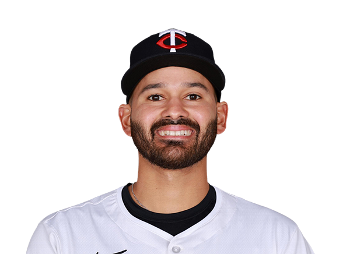 Pablo Lopez has exhibited a tremendous amount of growth over the past three seasons, particularly in the durability department. To illustrate, from 2021-23, he had already proved himself as one of baseball's most reliable first-half performers, with eerily similar numbers during that time span:
Pablo Lopez has exhibited a tremendous amount of growth over the past three seasons, particularly in the durability department. To illustrate, from 2021-23, he had already proved himself as one of baseball's most reliable first-half performers, with eerily similar numbers during that time span:
2021: 19 starts, 10 quality starts (53%), 3.21 FIP, 1.09 WHIP, 6.1 BB%, 27.1 K%
2022: 18 starts, 7 quality starts (39%), 3.64 FIP, 1.07 WHIP, 7.7 BB%, 24.3 K%
2023: 18 starts, 11 quality starts (61%), 3.15 FIP, 1.09 WHIP, 6.6 BB%, 30.5 K%
It's his second-half performance that has shown a decidedly progressive pattern. Here's Lopez's three-year performance after the All-Star break:
2021: 1 start, faced 9 batters
2022: 14 starts, 7 quality starts (50%), 3.81 FIP, 1.30 WHIP, 6.6 BB%, 22.8 K%
2023: 14 starts, 9 quality starts (64%), 3.58 FIP, 1.24 WHIP, 5.2 BB%, 27.6 K%
That Lopez also maintained his elevated average fastball velocity during the second half of last season -- his averaged 94.7 mph during that time, in line with his 94.8 first-half number and noticeably greater than his 93.5 average entering 2023 -- strengthens his case as one of the game's new aces and a top-10 SP option in fantasy.
 I -- and fantasy managers, generally -- dismiss "best shape of my life" reports from players at the onset of spring training, but when it comes to Vladimir Guerrero Jr., whose hard-luck 2023 was mentioned in multiple places previously in the Playbook, his such comments should at least raise an eyebrow. That primarily means to pay closer attention to his Grapefruit League happenings.
I -- and fantasy managers, generally -- dismiss "best shape of my life" reports from players at the onset of spring training, but when it comes to Vladimir Guerrero Jr., whose hard-luck 2023 was mentioned in multiple places previously in the Playbook, his such comments should at least raise an eyebrow. That primarily means to pay closer attention to his Grapefruit League happenings.
To reiterate those "bad luck" metrics, Guerrero had baseball's widest differential between his actual and Statcast-expected batting averages last season (35 points) and his actual and expected weighted on-base averages (38), at least among qualified hitters (Aaron Judge's 41-point difference in the latter was greater, if we expand the qualification group to 450 plate appearances or more).
Knee issues held Guerrero back last spring, but let's flash back to the last time the slugger reported to spring training having lost weight and added muscle, in 2021. That year resulted in his finishing second in AL MVP balloting, behind his major league-leading 48 homers and 123 runs scored while pacing the AL with his .401 on-base and .601 slugging percentages. This isn't to say that Guerrero is destined for another run at the AL's MVP award simply because he's looking physically better this spring, but he certainly has the skills to do it.
 Since his May 21, 2022, big league debut, Adley Rutschman leads all catcher-eligible players with 684 fantasy points, 267 games played, 1,157 plate appearances, 264 hits, 66 doubles, 101 extra-base hits, 433 total bases and 154 runs scored. Remarkably, he still has an area of prospective growth. He has yet to finish with better-than-league-average Statcast Barrel or hard-hit rates, probably in large part due to his 41.8% ground-ball rate (40%-plus in each of his two seasons to date). If Rutschman can add even a little lift to his average launch angle, watch out.
Since his May 21, 2022, big league debut, Adley Rutschman leads all catcher-eligible players with 684 fantasy points, 267 games played, 1,157 plate appearances, 264 hits, 66 doubles, 101 extra-base hits, 433 total bases and 154 runs scored. Remarkably, he still has an area of prospective growth. He has yet to finish with better-than-league-average Statcast Barrel or hard-hit rates, probably in large part due to his 41.8% ground-ball rate (40%-plus in each of his two seasons to date). If Rutschman can add even a little lift to his average launch angle, watch out.
 George Kirby's 9.05 K/BB rate was the ninth-best single-season number in baseball history, among pitchers who worked at least the full-year, ERA-qualified minimum of 162 innings in the given campaign. His control, not to mention his command of his three primary pitches (four-seamer, sinker and slider), is exceptional, making him one of the highest-floor pitchers in baseball.
George Kirby's 9.05 K/BB rate was the ninth-best single-season number in baseball history, among pitchers who worked at least the full-year, ERA-qualified minimum of 162 innings in the given campaign. His control, not to mention his command of his three primary pitches (four-seamer, sinker and slider), is exceptional, making him one of the highest-floor pitchers in baseball.
 Gunnar Henderson's rookie campaign was plenty productive, but consider that it began with a whimper, best encapsulated by his .178/.338/.346 and a 30.1% strikeout rate through the Baltimore Orioles' first 40 games (roughly 25% of their 2023 schedule). A series of adjustments, most notably a more balanced stance at the plate, helped jump-start his season at around that stage. Henderson hit .274/.321/.523 with 24 HR and 74 RBIs in 115 games from that point forward, his 311 fantasy points exceeded by only 25 other hitters.
Gunnar Henderson's rookie campaign was plenty productive, but consider that it began with a whimper, best encapsulated by his .178/.338/.346 and a 30.1% strikeout rate through the Baltimore Orioles' first 40 games (roughly 25% of their 2023 schedule). A series of adjustments, most notably a more balanced stance at the plate, helped jump-start his season at around that stage. Henderson hit .274/.321/.523 with 24 HR and 74 RBIs in 115 games from that point forward, his 311 fantasy points exceeded by only 25 other hitters.
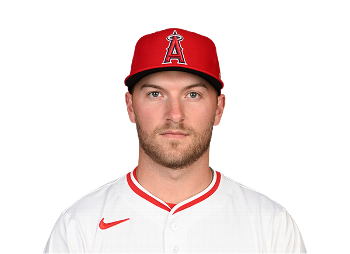 The advancements he made with his breaking pitches over the past two seasons have explained how Reid Detmers enjoyed a mini-breakthrough in 2022, then enjoyed a sizable bump in strikeout rate in 2023. Specifically, his "fast slider," classified as when he throws the pitch 90 mph or faster (13% of his entire pitch usage in his career), has generated a 37% whiff rate on swings.
The advancements he made with his breaking pitches over the past two seasons have explained how Reid Detmers enjoyed a mini-breakthrough in 2022, then enjoyed a sizable bump in strikeout rate in 2023. Specifically, his "fast slider," classified as when he throws the pitch 90 mph or faster (13% of his entire pitch usage in his career), has generated a 37% whiff rate on swings.
That's why reports in February that Detmers is planning to throw his slider at a more consistent, lower velocity, warrants examination once he begins working games during the preseason. I'm of the belief that Detmers is better off when he's incorporating the fast slider, as he did during his first eight turns of 2023, when he had a 29.8% overall strikeout rate and a 3.40 FIP.
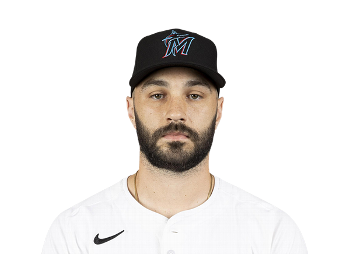 Tanner Scott's raw stuff took a noticeable step forward during the final two months of last season. His fastball, which until that point in his career had averaged 96.7 mph, averaged 97.7 mph from Aug. 1 forward, while his slider got 8% more ground balls and resulted in 13% less hard contact than it did before that date. Scott had 10 saves, three holds and an 0.99 ERA over 24 appearances during that time, making him a potential top-10 fantasy closer if he's handed the full-time role in 2024 right out of the gate.
Tanner Scott's raw stuff took a noticeable step forward during the final two months of last season. His fastball, which until that point in his career had averaged 96.7 mph, averaged 97.7 mph from Aug. 1 forward, while his slider got 8% more ground balls and resulted in 13% less hard contact than it did before that date. Scott had 10 saves, three holds and an 0.99 ERA over 24 appearances during that time, making him a potential top-10 fantasy closer if he's handed the full-time role in 2024 right out of the gate.
 Three players have managed at least 20 home runs and 20 stolen bases in each of the past three seasons: Trea Turner, Jose Ramirez and Randy Arozarena. Although Arozarena's Statcast sprint speed dipped beneath the 80th percentile -- he was in the 79th -- for the first time in 2023, he had the best contact-quality metrics of his career and he's a prime-age 29 years old. There's every reason to believe he could make it a fourth straight 20/20 year in 2024 and, even if he doesn't, he might make enough gains in the power department to offset any decline in stolen bases.
Three players have managed at least 20 home runs and 20 stolen bases in each of the past three seasons: Trea Turner, Jose Ramirez and Randy Arozarena. Although Arozarena's Statcast sprint speed dipped beneath the 80th percentile -- he was in the 79th -- for the first time in 2023, he had the best contact-quality metrics of his career and he's a prime-age 29 years old. There's every reason to believe he could make it a fourth straight 20/20 year in 2024 and, even if he doesn't, he might make enough gains in the power department to offset any decline in stolen bases.
 Is there a chance that Esteury Ruiz -- the AL leader with 67 stolen bases last season, but generally regarded a one-category fantasy performer -- might have something more to offer his fantasy teams going forward? Bear in mind that over his final 47 games following his return from a shoulder injury last August he showed distinctly improved contact-quality metrics:
Is there a chance that Esteury Ruiz -- the AL leader with 67 stolen bases last season, but generally regarded a one-category fantasy performer -- might have something more to offer his fantasy teams going forward? Bear in mind that over his final 47 games following his return from a shoulder injury last August he showed distinctly improved contact-quality metrics:
Pre-July IL stint: .320 SLG, 7.9 degree average launch angle, 18.8% hard-hit rate
Post-July IL stint: .391 SLG, 12.4 degree average launch angle, 23.5% hard-hit rate
Ruiz's ground-ball rate went from 53.0% to 43.5% in the process, which is especially important considering he routinely had ground-ball rates near 40% during his minor league career, in which he averaged 17 home runs per 162 games played.
 Triston Casas adjusted his batting stance early last season, specifically lowering the position of his left elbow before his swing, which seemed to unlock his full power potential and set him up for a prospective breakthrough 2024. Through the Boston Red Sox's first 30 team games of 2023, Casas was batting an abysmal .128/.281/.282 with just three home runs and a 30.2% strikeout rate. From that point forward, and in large part due to the change, he hit .293/.387/.536 with 21 homers and a 23.9% K rate in 106 games. Casas is a corner infield-valued fantasy pick with possible top-10 positional impact.
Triston Casas adjusted his batting stance early last season, specifically lowering the position of his left elbow before his swing, which seemed to unlock his full power potential and set him up for a prospective breakthrough 2024. Through the Boston Red Sox's first 30 team games of 2023, Casas was batting an abysmal .128/.281/.282 with just three home runs and a 30.2% strikeout rate. From that point forward, and in large part due to the change, he hit .293/.387/.536 with 21 homers and a 23.9% K rate in 106 games. Casas is a corner infield-valued fantasy pick with possible top-10 positional impact.
 Speaking of adjustments, far greater recognition of breaking pitches had a lot to do with CJ Abrams' second-half breakthrough in 2023. A .257/.318/.434 hitter with 11 homers and 38 RBIs over 78 games from July 1 forward, Abrams shrunk his whiff rate against breaking pitches (specifically curveballs and sliders) from 37% through June 30 to 27% thereafter, raising his batting average from .188 to .241 against them in the process. His 82.3% contact rate from July 1 forward was right in line with his 82.8% career minor league rate, signaling that he might well have arrived as a five-category contributor.
Speaking of adjustments, far greater recognition of breaking pitches had a lot to do with CJ Abrams' second-half breakthrough in 2023. A .257/.318/.434 hitter with 11 homers and 38 RBIs over 78 games from July 1 forward, Abrams shrunk his whiff rate against breaking pitches (specifically curveballs and sliders) from 37% through June 30 to 27% thereafter, raising his batting average from .188 to .241 against them in the process. His 82.3% contact rate from July 1 forward was right in line with his 82.8% career minor league rate, signaling that he might well have arrived as a five-category contributor.
 Sean Murphy had one of the more head-scratching 2023 campaigns as the 28-year-old, fifth-year catcher set personal bests in terms of home runs hit, slugging percentage, isolated power and, beneath all that, 95th-percentile-or-better Statcast Barrel rates and expected weighted on-base average (not to mention highly graded defensive metrics). Still, he saw a significant downturn in playing time compared to 2022, ceding 36% of the catcher starts to backup Travis d'Arnaud, which seemed to affect him particularly down the stretch.
Sean Murphy had one of the more head-scratching 2023 campaigns as the 28-year-old, fifth-year catcher set personal bests in terms of home runs hit, slugging percentage, isolated power and, beneath all that, 95th-percentile-or-better Statcast Barrel rates and expected weighted on-base average (not to mention highly graded defensive metrics). Still, he saw a significant downturn in playing time compared to 2022, ceding 36% of the catcher starts to backup Travis d'Arnaud, which seemed to affect him particularly down the stretch.
Looking at Murphy's underlying metrics, he possesses top-10 positional potential, but isn't in much different a position in terms of playing time entering 2024. Still, among No. 2 catchers, he's one I'm targeting wherever I can.
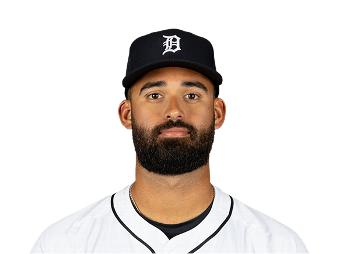 Riley Greene struggled mightily with injuries last season, between a fibula stress fracture that cost him 34 games in June and July to the Tommy John surgery that prematurely ended his season in September. In between those ailments, he was one of the unluckier hitters in baseball, as Statcast had his expected batting average just one point higher than his actual number and his expected wOBA 21 points higher than his actual number. Greene managed 70th-percentile-or-better rates in terms of both of those expected rates, Barrel and hard-hit rates, average exit velocity and sprint speed, suggesting his true value is significantly greater than what we saw in 2023. Reports on his health entering spring training were also good.
Riley Greene struggled mightily with injuries last season, between a fibula stress fracture that cost him 34 games in June and July to the Tommy John surgery that prematurely ended his season in September. In between those ailments, he was one of the unluckier hitters in baseball, as Statcast had his expected batting average just one point higher than his actual number and his expected wOBA 21 points higher than his actual number. Greene managed 70th-percentile-or-better rates in terms of both of those expected rates, Barrel and hard-hit rates, average exit velocity and sprint speed, suggesting his true value is significantly greater than what we saw in 2023. Reports on his health entering spring training were also good.
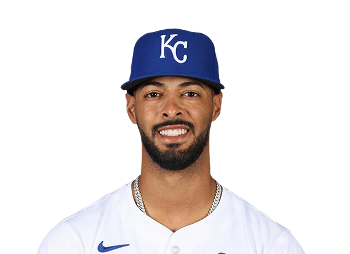 MJ Melendez has been one of the most unlucky performers in terms of home runs over the past two seasons, with Statcast saying he should have hit seven more homers than he actually did during that time. Yes, Kauffman Stadium's HR-suppressing environment contributed, but the catcher-turned-outfielder nevertheless put up sneaky-good power metrics, including 96th percentile average exit velocity, a 91st percentile hard-hit rate, and a 34.6% fly ball rate that was ninth-highest among 133 batting title-eligible hitters.
MJ Melendez has been one of the most unlucky performers in terms of home runs over the past two seasons, with Statcast saying he should have hit seven more homers than he actually did during that time. Yes, Kauffman Stadium's HR-suppressing environment contributed, but the catcher-turned-outfielder nevertheless put up sneaky-good power metrics, including 96th percentile average exit velocity, a 91st percentile hard-hit rate, and a 34.6% fly ball rate that was ninth-highest among 133 batting title-eligible hitters.
He's unlikely to garner as much attention in fantasy drafts entering 2024, having lost his prior catcher eligibility, but Melendez is still a sneaky pick, even as an OF-only player. And remember, it takes only 10 games behind the plate in 2024 for him to recapture eligibility there for the rest of the season, which is well within the realm of possibility.
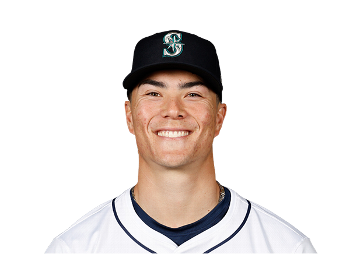 While his season-ending numbers were hardly extraordinary, Bryan Woo's adjustments over his final seven starts gave a lot of hope for more growth in 2024. Beginning with his return from a forearm injury on Aug. 22, he leaned on the cutter that he introduced one month earlier 24% of the time, with the pitch generating whiffs on 17% of swings and being responsible for a .194 BAA. That was huge for Woo, who until that point had exhibited a wide platoon split, but consider that lefties hit just .138/.306/.241 against him over that seven-start stretch.
While his season-ending numbers were hardly extraordinary, Bryan Woo's adjustments over his final seven starts gave a lot of hope for more growth in 2024. Beginning with his return from a forearm injury on Aug. 22, he leaned on the cutter that he introduced one month earlier 24% of the time, with the pitch generating whiffs on 17% of swings and being responsible for a .194 BAA. That was huge for Woo, who until that point had exhibited a wide platoon split, but consider that lefties hit just .138/.306/.241 against him over that seven-start stretch.
 Only two players in baseball had at least 90th-percentile Statcast Barrel and hard-hit rates as well as at least 80th-percentile sprint speed last season: Mike Trout and Christopher Morel. The Chicago Cubs have struggled to find a regular home for Morel, but his combination of elite raw power and well above-average speed can be attractive as a potential rotisserie value pick.
Only two players in baseball had at least 90th-percentile Statcast Barrel and hard-hit rates as well as at least 80th-percentile sprint speed last season: Mike Trout and Christopher Morel. The Chicago Cubs have struggled to find a regular home for Morel, but his combination of elite raw power and well above-average speed can be attractive as a potential rotisserie value pick.
 Teoscar Hernandez might have landed in about the best circumstances for his fantasy value. He's one of only seven players to have hit at least 25 homers in each of the past four full MLB seasons (as well as 10-plus during the COVID-shortened 2020). He has also had at least 13.8% barrel and 46.2% hard-hit rates in four of his past five years. Dodger Stadium is one of the game's most "sneaky good" power-hitting environments -- it inflated home runs by 17% over the past three seasons, fourth-most among current ballparks -- and Hernandez will bat behind one of baseball's most talented top-halves of a lineup.
Teoscar Hernandez might have landed in about the best circumstances for his fantasy value. He's one of only seven players to have hit at least 25 homers in each of the past four full MLB seasons (as well as 10-plus during the COVID-shortened 2020). He has also had at least 13.8% barrel and 46.2% hard-hit rates in four of his past five years. Dodger Stadium is one of the game's most "sneaky good" power-hitting environments -- it inflated home runs by 17% over the past three seasons, fourth-most among current ballparks -- and Hernandez will bat behind one of baseball's most talented top-halves of a lineup.
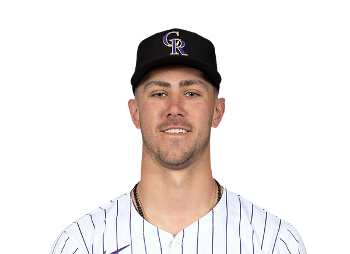 Nolan Jones was an unusual Colorado Rockies hitter in 2023, posting a wOBA four points higher away from Coors Field (.397) than at home (.393) and OPS seven points higher (.935, compared to .928). His .935 road OPS, in fact, was eighth-best in franchise history (among players with at least as many as his 213 road plate appearances) and bear in mind that six of the seven seasons better on that list came from Hall of Famers Todd Helton (4) and Larry Walker (2). Jones' metrics say that batting average should be more of a problem for him going forward, but he has the raw power and speed to repeat, or even exceed, last year's 20/20 numbers.
Nolan Jones was an unusual Colorado Rockies hitter in 2023, posting a wOBA four points higher away from Coors Field (.397) than at home (.393) and OPS seven points higher (.935, compared to .928). His .935 road OPS, in fact, was eighth-best in franchise history (among players with at least as many as his 213 road plate appearances) and bear in mind that six of the seven seasons better on that list came from Hall of Famers Todd Helton (4) and Larry Walker (2). Jones' metrics say that batting average should be more of a problem for him going forward, but he has the raw power and speed to repeat, or even exceed, last year's 20/20 numbers.
 Merrill Kelly has quietly become one of the more reliable starting pitchers in the game, having finished as SP24 in fantasy points in 2022 and SP19 in 2023. That coincides with the adjustments he made to his changeup grip, which added a noticeable amount of drop to the pitch last year, and those extended all the way through the 2023 postseason, during which he won 3-of-4 starts behind a 2.25 ERA.
Merrill Kelly has quietly become one of the more reliable starting pitchers in the game, having finished as SP24 in fantasy points in 2022 and SP19 in 2023. That coincides with the adjustments he made to his changeup grip, which added a noticeable amount of drop to the pitch last year, and those extended all the way through the 2023 postseason, during which he won 3-of-4 starts behind a 2.25 ERA.
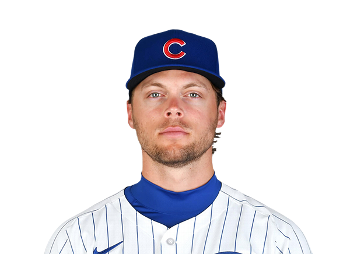 It's no wonder that Nico Hoerner broke through in 2023, a season that saw new rules governing defensive shifts while expanding the size of the bases. He simply does not miss, his 87.3% contact rate over the past two seasons combined was sixth-best among hitters with at least 600 trips to the plate, and his 86.7% contact rate on all swings during that same time span was third best.
It's no wonder that Nico Hoerner broke through in 2023, a season that saw new rules governing defensive shifts while expanding the size of the bases. He simply does not miss, his 87.3% contact rate over the past two seasons combined was sixth-best among hitters with at least 600 trips to the plate, and his 86.7% contact rate on all swings during that same time span was third best.
He also has well above-average speed that fueled his 43 steals (sixth-most in MLB). Hoerner even improved his chase rate (swing rate on pitches outside the rulebook strike zone) by 4% after the All-Star break compared to before it, something that could push his OBP closer to .360 than .340 and perhaps help him take another step forward in 2024.
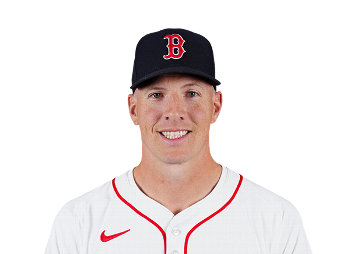 Nick Pivetta's 2023 was full of peaks and valleys and moves from the rotation to bullpen and back again, but his five-start finish to the season was ... interesting, to say the least. During that time, he had a 2.37 ERA, a 33.0% strikeout rate and a .187 BAA, but what really stood out was his change in repertoire. During that time, his four-seam fastball averaged 95.0 mph, noticeably faster than the 94.3 he had up to that point in his career, and he dabbled with a sweeper (10.1% usage), which was responsible for 11 of his 38 K's during that time.
Nick Pivetta's 2023 was full of peaks and valleys and moves from the rotation to bullpen and back again, but his five-start finish to the season was ... interesting, to say the least. During that time, he had a 2.37 ERA, a 33.0% strikeout rate and a .187 BAA, but what really stood out was his change in repertoire. During that time, his four-seam fastball averaged 95.0 mph, noticeably faster than the 94.3 he had up to that point in his career, and he dabbled with a sweeper (10.1% usage), which was responsible for 11 of his 38 K's during that time.
If Pivetta is throwing similarly hard with as effective a sweeper during Grapefruit League play, perhaps he'll finally be ready to deliver the top-30 fantasy starter potential that has been teased multiple times earlier in his career.
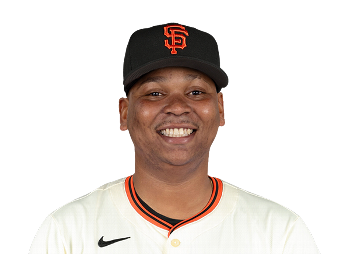 Finally, it's our trivia question answer. Who is the only player in baseball to have managed at least a 92.5 mph average Statcast exit velocity and 10% barrel and 50% hard-hit rates while qualifying for the batting title in each of the past three seasons? It's Rafael Devers, who would have joined Yordan Alvarez and Aaron Judge had either of them managed to qualify in all three years. Perhaps as a result of Fenway Park's spacious right-field territory, Devers has hit a combined 8.9 fewer home runs than what Statcast has estimated that he should have during that three-year span.
Finally, it's our trivia question answer. Who is the only player in baseball to have managed at least a 92.5 mph average Statcast exit velocity and 10% barrel and 50% hard-hit rates while qualifying for the batting title in each of the past three seasons? It's Rafael Devers, who would have joined Yordan Alvarez and Aaron Judge had either of them managed to qualify in all three years. Perhaps as a result of Fenway Park's spacious right-field territory, Devers has hit a combined 8.9 fewer home runs than what Statcast has estimated that he should have during that three-year span.
